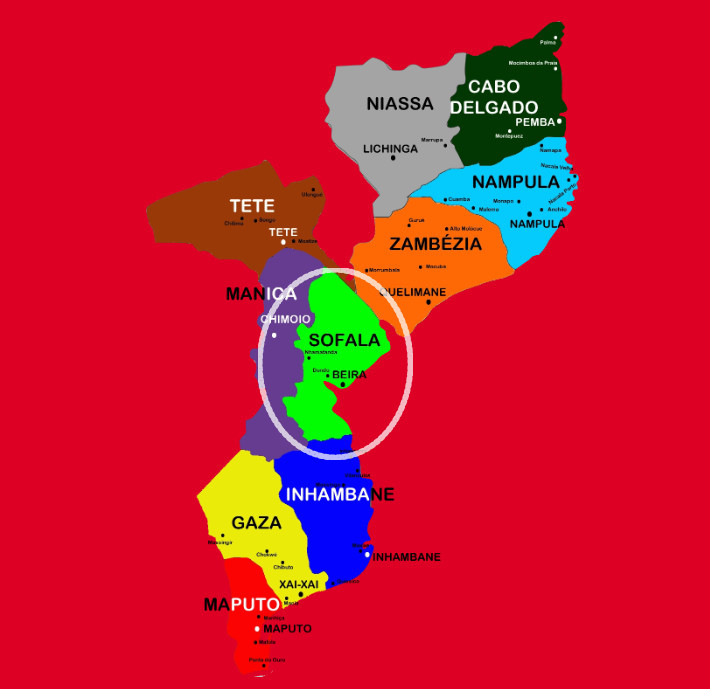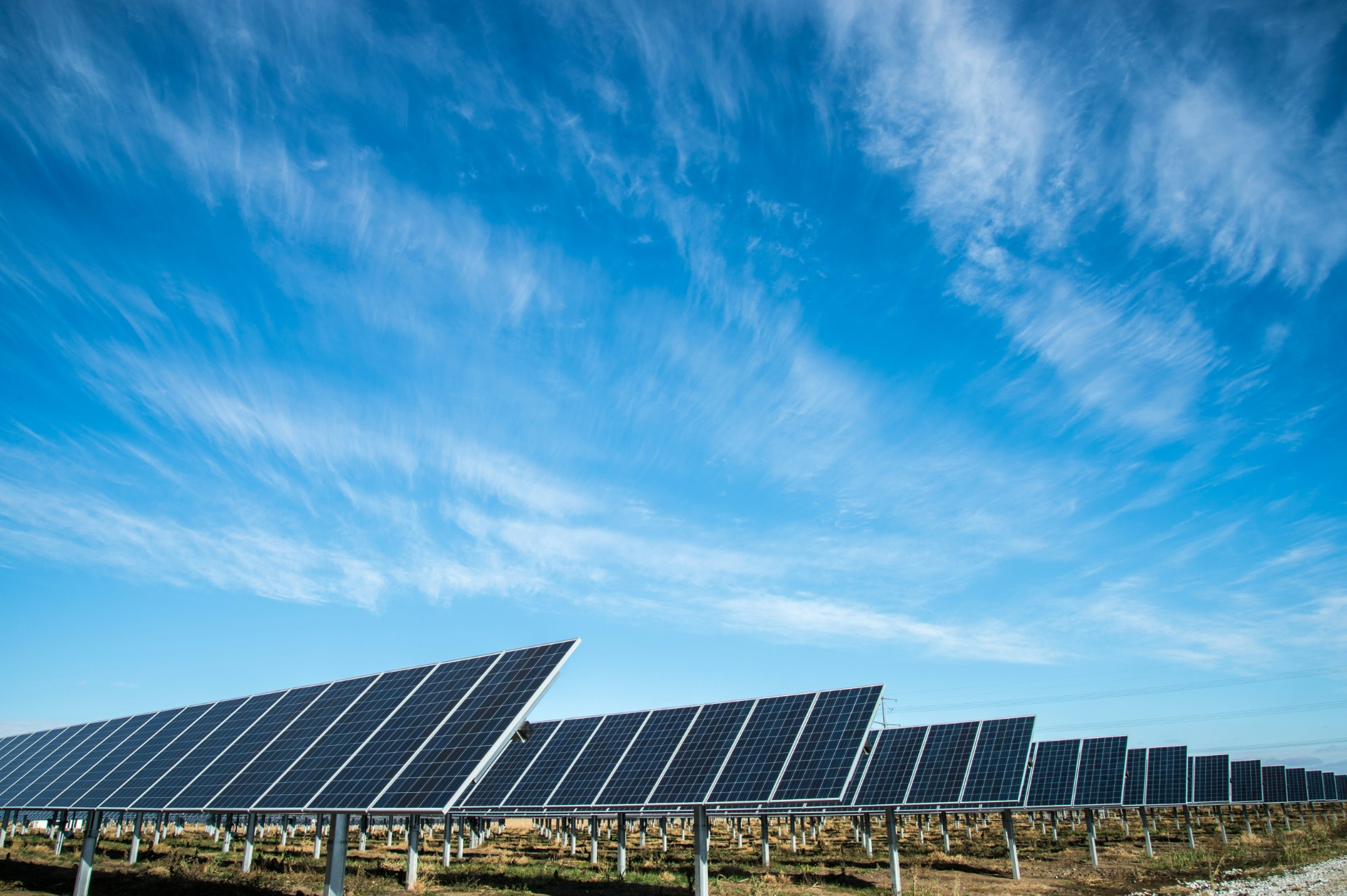MozambiqueExpert - Investors Guide
The Green Energy Mozambique Industrial Park - Sofala

The Green Energy Mozambique Industrial Park
The Green Energy Mozambique Industrial Park: Eternal Tsingshan's $40 Billion Vision for Sofala
Africa's Largest Green Industrial Zone
Chinese manufacturing giant Eternal Tsingshan has unveiled plans for a US$40 billion industrial park in Mozambique's Sofala Province—one of the most ambitious industrial developments in African history. Spanning approximately 30,000 hectares across Dondo and Muanza districts, the Green Energy Mozambique Industrial Park is designed to become one of Africa's largest green industrial and special economic zones, powered entirely by renewable energy.
The scale is extraordinary. At $40 billion, this single project represents nearly three times Mozambique's entire annual GDP and dwarfs any previous foreign direct investment in the country. The developer, Eternal Tsingshan, is part of Tsingshan Holding Group—the world's largest stainless steel producer and a major player in nickel production and new energy materials. This is no speculative venture; Tsingshan brings proven manufacturing expertise, substantial financial capacity, and a track record of executing multi-billion dollar industrial megaprojects in Indonesia and China.
For Sofala Province, already receiving more than 88% of Mozambique's recent energy and industrial investment approvals, this project represents a quantum leap that will define the province's economic identity for generations.
The Developer: Industrial Heavyweight with Proven Track Record
Understanding this megaproject requires understanding Eternal Tsingshan's credentials. Tsingshan Holding Group operates as a vertically integrated industrial powerhouse with global operations in stainless steel production (over 10 million tonnes annually), nickel mining and processing, new energy materials for batteries, and large-scale industrial park development.
Critically, Tsingshan's Indonesia operations provide a relevant precedent. The group has invested over $20 billion in Indonesian nickel processing and stainless steel production, transforming Indonesia from a raw ore exporter into the world's dominant nickel processing hub. The Mozambique project appears designed to replicate this model—leveraging strategic location and resources to build an integrated manufacturing ecosystem.
Tsingshan has demonstrated both the financial capacity to deploy tens of billions in capital and the operational expertise to execute complex industrial megaprojects in emerging markets. This distinguishes the Mozambique announcement from aspirational proposals that never materialize.
The 30,000-Hectare Industrial Ecosystem
The industrial park encompasses distinct functional zones across its massive footprint:
Manufacturing Zone: Core production facilities for new energy batteries, solar photovoltaics, and potentially stainless steel and aluminum. These energy-intensive operations require substantial land for factories, material storage, quality control facilities, and environmental management systems.
Energy Generation Zone: Dedicated areas for solar panel arrays, wind turbine installations, and connections to hydropower sources. The park will operate on 100% renewable energy—solar, wind, and hydropower—making it one of Africa's largest renewable-powered industrial facilities.
Port Infrastructure: A dedicated seaport designed to handle raw material imports and finished goods exports. This eliminates dependence on the congested Port of Beira and provides controlled logistics tailored to the park's needs, including deep-water berths, container terminals, bulk cargo facilities, and rail connections.
Living Zone: Residential areas, retail facilities, healthcare services, schools, and recreational amenities for the workforce—essentially creating a new industrial city supporting 10,000+ employees.
Infrastructure Corridor: Roads, power transmission lines, water supply systems, wastewater treatment, telecommunications networks, and internal rail connections.
This integrated, self-contained design ensures reliable operations less vulnerable to external bottlenecks. By building dedicated infrastructure rather than relying solely on existing public systems, the park achieves operational control essential for manufacturing competitiveness.
Manufacturing Focus: Batteries and Solar Panels
The project explicitly prioritizes two sectors critical to the global energy transition:
New Energy Batteries: Production of lithium-ion batteries for electric vehicles and energy storage systems. Battery manufacturing is extraordinarily capital-intensive, requiring cleanroom facilities, precision equipment, and specialized expertise. Eternal Tsingshan's parent group has been aggressively expanding into battery materials, particularly nickel processing, enabling vertical integration from raw materials through to finished battery production.
Global battery demand is projected to increase tenfold by 2030 as electric vehicle adoption accelerates and renewable energy requires massive storage capacity. Establishing manufacturing capacity now positions Mozambique to serve both regional and export markets as demand surges.
Solar Photovoltaics: Manufacturing solar panels requires semiconductor processing, glass production, aluminum framing, and assembly operations. Mozambique possesses exceptional solar resources yet currently imports virtually all panels for its energy transition. Domestic manufacturing would reduce costs, create local employment, and position Mozambique as a supplier to neighboring countries.
Critically, both products benefit enormously from renewable-energy manufacturing credentials. As carbon border adjustments and corporate net-zero commitments reshape global procurement, products manufactured with fossil fuel electricity face growing penalties. Batteries and solar panels produced entirely with renewable energy carry compelling carbon advantages that translate to price premiums and preferential market access.
The 10,000 Jobs Promise and Economic Multipliers
The industrial park is projected to create up to 10,000 direct jobs—one of the largest single employment generation initiatives in Mozambique's history. These positions span manufacturing operations (6,000-7,000), port and logistics (1,000-1,500), energy and utilities (500-800), administration and professional services (1,000-1,500), and supporting functions (500-1,000).
Yet the employment impact extends far beyond direct positions. Industrial parks of this magnitude generate substantial indirect and induced employment:
- Supply chain employment: Local transportation, maintenance, professional services firms creating 15,000-20,000 additional jobs
- Construction phase employment: 15,000-25,000 temporary jobs during peak building periods
- Service sector growth: Retail, healthcare, education, banking, and entertainment serving the workforce and families
- Downstream industries: Businesses utilizing the park's outputs as inputs
Total employment footprint could reach 25,000-40,000 jobs across direct, indirect, and induced categories—a transformative labor market impact for Sofala Province.
Critically, these are formal sector positions with stable wages, benefits, skills development, and social security contributions—fundamentally different from the informal subsistence employment dominating Sofala's rural economy. The wage income injected locally will stimulate demand for goods and services, creating virtuous cycles of economic growth.
Strategic Location and the Dedicated Port
Dondo and Muanza districts offer optimal location advantages:
- Port access: Adjacent to Port of Beira, gateway for landlocked Zimbabwe, Zambia, and Malawi
- Land availability: 30,000 hectares of relatively undeveloped, contiguous land
- Infrastructure proximity: Access to roads, power lines, water supply, telecommunications
- Labor pool: Proximity to Beira (population 600,000) provides skilled workforce
- Government support: Sofala designated priority investment zone with streamlined permitting
The dedicated seaport provides critical advantages: operational control over loading schedules, streamlined customs procedures, specialized handling equipment, capacity assurance eliminating bottlenecks, and cost control avoiding third-party fees. The port will handle inbound raw materials (lithium compounds, nickel, copper, graphite, specialized chemicals) and outbound finished products (batteries, solar panels, manufactured goods) destined for regional SADC markets and international exports.
Aligning with Mozambique's $80 Billion Energy Transition
The industrial park forms a central pillar of Mozambique's $80 billion national energy transition strategy designed to position the country as a sustainable investment destination and regional energy hub by 2050. The national strategy targets 20% of electricity generation from solar and wind by 2040.
The project advances multiple strategy elements simultaneously:
- Creates massive demand for solar panels and batteries, providing domestic market for renewable components
- Manufactures components domestically, reducing import dependence and lowering deployment costs
- Demonstrates technical and economic viability of renewable-powered industrial operations
- Attracts tens of billions in private capital aligned with energy transition objectives
- Generates tax revenues funding public investments in renewable infrastructure
The synergies create a virtuous cycle: domestic manufacturing reduces transition costs, increasing renewable deployment, creating more demand for domestically manufactured components.
Economic Impact: Transforming Sofala's Trajectory
At full operation, the park's manufacturing output could represent a substantial portion of Sofala's provincial GDP. Battery and solar panel manufacturing are high-value activities; annual production value could potentially reach billions of dollars, dramatically expanding the economic base beyond traditional agriculture and port services.
The project will generate multiple government revenue streams: corporate income taxes, value-added taxes, employment taxes, social security contributions, import duties, property taxes, and indirect taxes from economic multiplier effects. Annual tax revenues could reach tens or hundreds of millions of dollars once operations mature.
Infrastructure co-investment—roads, power systems, water supply, telecommunications—will benefit the broader province beyond the park itself, unlocking productivity improvements across agriculture, commerce, and other sectors.
Technology transfer and training for advanced manufacturing will create lasting human capital and transferable skills. Successful execution could attract additional manufacturers, creating agglomeration effects that transform Sofala into a genuine industrial cluster.
The Beira Corridor: Mozambique's Critical Artery
To understand Sofala's investment potential is to first understand the Beira Corridor. This integrated logistics system—comprising the Port of Beira, strategic railway connections, and road networks—serves as the primary trade route for three landlocked SADC nations. The Machipanda railway line connecting to Zimbabwe is being upgraded to handle 3 million tonnes annually, a critical capacity expansion that will cement Beira's competitive advantage over more distant ports in South Africa and Tanzania.
For landlocked nations, proximity and efficiency translate directly to competitiveness. Every day of transit time saved represents reduced inventory costs, faster market access, and improved trade margins. The Beira Corridor delivers this advantage, making Sofala not merely a Mozambican investment destination but a regional economic lynchpin whose performance affects the GDP growth trajectories of multiple countries.
